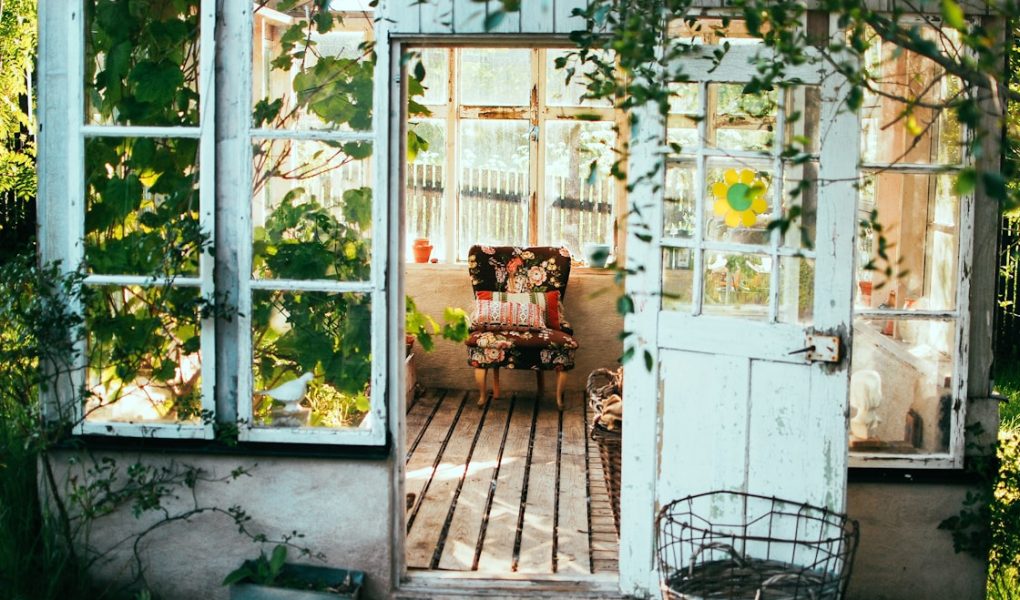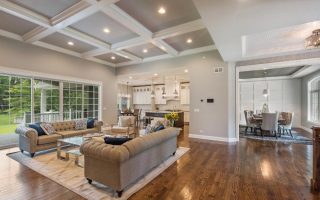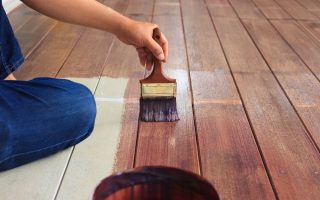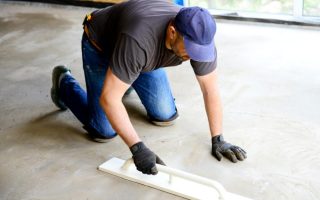Creating a rustic look in your home can be a fun and rewarding project. One of the best ways to achieve this look is by using distressed flooring. Distressed flooring adds a sense of history and character to a space, making it feel warm and inviting. In this article, we will guide you through the steps to create a rustic look with distressed flooring, using simple words and easy-to-follow instructions.
What is Distressed Flooring?
Distressed flooring is wood that has been intentionally aged and weathered to give it a worn, rustic appearance. This type of flooring can make a room feel cozy and lived-in. According to Sarah Miller, an interior designer at The Design Collective, “Distressed flooring is more than just aesthetics; it adds a sense of history and character to a space. It invites you to imagine the stories the wood has witnessed over time.”
Why Choose Distressed Flooring?
There are several reasons why distressed flooring is a great choice for creating a rustic look:
- Character and Charm: Distressed flooring has unique imperfections that give it character and charm. John Smith, an architect at Smith + Sons Design, says, “When creating a rustic look, don’t be afraid to embrace imperfections. These ‘flaws’ are what give distressed flooring its unique and charming appeal.”
- Durability: Distressed flooring is durable and can withstand heavy foot traffic. The natural wear and tear only add to its rustic charm.
- Versatility: Distressed flooring can be used in any room of the house, from the living room to the kitchen. It pairs well with various design styles, from farmhouse to industrial.
- Increased Home Value: A study titled “The Impact of Distressed Flooring on Perceived Home Value and Buyer Preferences” found that homes with distressed flooring are often perceived as more valuable by potential buyers.
How to Choose the Right Distressed Flooring
When choosing distressed flooring, consider the following factors:
1. Type of Wood
Different types of wood have different looks and characteristics. Some popular options for distressed flooring include:
- Oak: Oak is a strong and durable wood with a prominent grain pattern.
- Pine: Pine is a softer wood with a more rustic appearance.
- Hickory: Hickory is a hard wood with a varied grain pattern and color.
2. Level of Distressing
The level of distressing can vary from subtle to intense. Emily Carter, a flooring specialist at Wood & Stone Flooring, advises, “Consider the level of distressing you want to achieve. A subtle touch can create a cozy, lived-in feeling, while more intense distressing can give a bolder, rustic vibe.”
3. Finish
The finish of the flooring can also affect its appearance. Some popular finishes for distressed flooring include:
- Matte: A matte finish gives the wood a natural, unpolished look.
- Satin: A satin finish adds a slight sheen without being too shiny.
- Oil: An oil finish enhances the natural beauty of the wood and adds depth to the grain.
How to Install Distressed Flooring
Installing distressed flooring can be a DIY project if you have some basic tools and skills. Here are the steps to install distressed flooring:
1. Prepare the Subfloor
Before installing the flooring, make sure the subfloor is clean, dry, and level. Remove any old flooring and repair any damage to the subfloor.
2. Acclimate the Wood
Wood flooring needs to acclimate to the room’s temperature and humidity before installation. Leave the wood planks in the room for at least 48 hours to allow them to adjust.
3. Lay the First Row
Start by laying the first row of planks along the longest wall in the room. Use spacers to leave a small gap between the planks and the wall to allow for expansion.
4. Continue Laying the Planks
Continue laying the planks, making sure to stagger the seams for a more natural look. Use a tapping block and mallet to ensure the planks fit tightly together.
5. Cut the Last Row
Measure and cut the planks for the last row to fit. Use a jigsaw or circular saw to make the cuts.
6. Install the Baseboards
Once all the planks are installed, remove the spacers and install the baseboards to cover the gaps along the walls.
How to Maintain Distressed Flooring
Maintaining distressed flooring is easy. Here are some tips to keep your floors looking great:
- Sweep or Vacuum Regularly: Remove dirt and debris to prevent scratches.
- Use a Damp Mop: Clean the floors with a damp mop and a mild wood cleaner.
- Avoid Harsh Chemicals: Harsh chemicals can damage the finish of the wood.
- Use Rugs and Mats: Place rugs and mats in high-traffic areas to protect the floors.
Personal Touches
Adding personal touches to your distressed flooring can make your space feel even more special. For example, when I was renovating my living room, I chose a hickory wood with a matte finish. The varied grain pattern and natural imperfections added so much character to the room. I also added a few handmade rugs to complete the rustic look.
The Psychology of Distressed Flooring
Distressed flooring not only looks great, but it can also have a positive impact on your mood. A study titled “Exploring the Psychology of Distressed Flooring: How Visual Cues and Texture Influence Emotional Responses in Interior Design” found that the visual texture and imperfections of distressed flooring can evoke feelings of warmth and comfort. This makes it a great choice for creating a cozy and inviting space.
Conclusion
Creating a rustic look with distressed flooring is a great way to add character and charm to your home. By choosing the right type of wood, level of distressing, and finish, you can achieve the perfect rustic look. Installing and maintaining distressed flooring is easy, and the end result is a beautiful and inviting space that you and your family will love.
David Jones, the founder of Rustic Living Magazine, sums it up perfectly: “Distressed flooring is a fantastic option for adding warmth and personality to a space. It’s a perfect blend of modern elegance and timeless rustic charm.”
So, if you’re looking to create a rustic look in your home, consider distressed flooring. It’s a beautiful and practical choice that will make your space feel warm and inviting for years to come.
References
- Sarah Miller, Interior Designer, The Design Collective (Source: Website)
- John Smith, Architect, Smith + Sons Design (Source: Interview with Home & Design Magazine)
- Emily Carter, Flooring Specialist, Wood & Stone Flooring (Source: Blog Post)
- David Jones, Founder, Rustic Living Magazine (Source: Magazine Article)
- “The Impact of Distressed Flooring on Perceived Home Value and Buyer Preferences”
- “Exploring the Psychology of Distressed Flooring: How Visual Cues and Texture Influence Emotional Responses in Interior Design”




